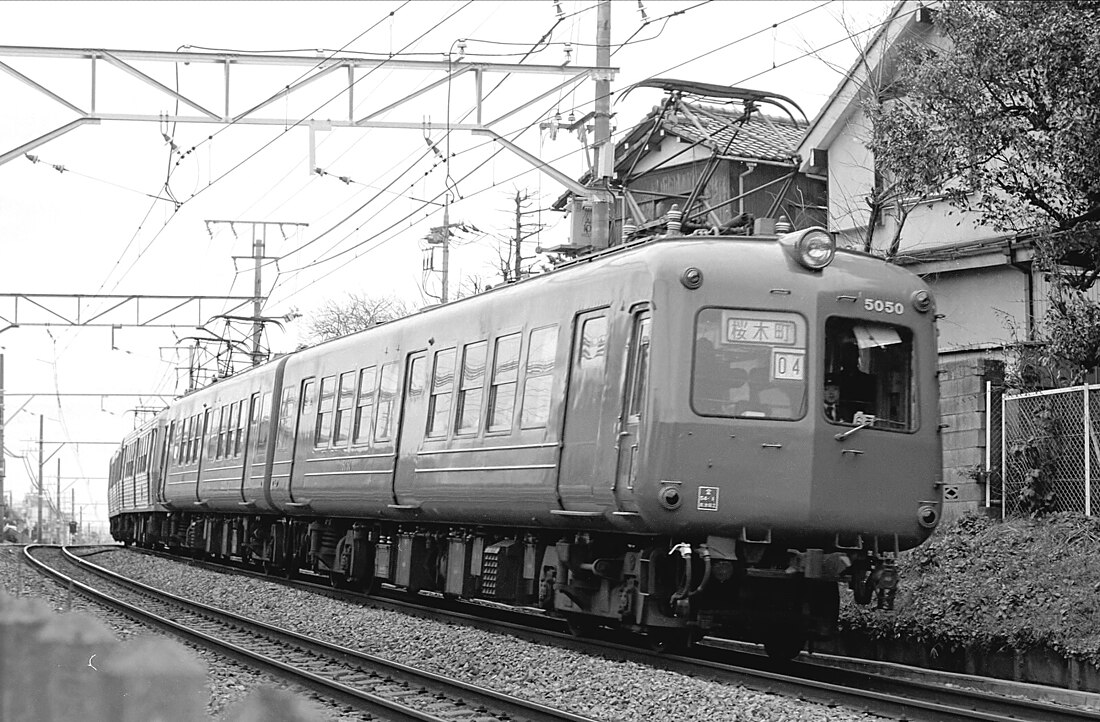Top Qs
Timeline
Chat
Perspective
Tokyu 5000 series (1954)
Japanese train type From Wikipedia, the free encyclopedia
Remove ads
The Tokyu 5000 series (東急5000系, Tōkyū 5000-kei) was an electric multiple unit (EMU) train type operated by the private railway operator Tokyu Corporation in Japan from 1954 until 1986.[2]
Remove ads
Specifications
Formations
The trains were formed as three-car sets, and were later lengthened to up to six cars per trainset.[2]
Interior
The interior consisted of longitudinal seating.[3] The heat of the resistors could be used to heat the passenger compartments.[3]
- Interior view of a 5000 series operated by Gakunan Railway
- Interior view of Kumamoto Electric Railway 5102A
History
The trains entered service on October 16, 1954.[4] A total of 105 cars were built by Tokyu Car from 1954 to 1959.[2] Toyoko Line services operated with 5000 series trains ended in March 1980.[2]
The 5000 series was withdrawn from Meguro Line services in June 1986, and the trains were retired after a farewell run in July 1986.[2]
New Tokyu 5000 series set 5122 received a green vinyl wrapping livery in September 2017, reminiscent of the original 5000 series' livery.[5]
Remove ads
Other operators
About 70 former Tokyu 5000 series vehicles were transferred to other operators.[2] Transfer of former 5000 series trains to Nagano Electric Railway began in 1977.[2] They were also operated by Gakunan Railway, Ueda Electric Railway, Matsumoto Electric Railway, Fukushima Kotsu, and Kumamoto Electric Railway.[4]
- Gakunan 5000 series in September 2004
- Ueda Kotsu 5000 series in September 1986
- Nagaden 2500 series in May 1988
- Matsuden 5000 series
- Kumamoto 5000 series in September 2006
Preserved examples
- Deha 5001: was preserved in front of Shibuya Station, Tokyo,[2] relocated to Odate, Akita in June 2020[6]
- Matsumoto Electric Railway (Matsuden): one train stored, was repainted into its former Tokyu livery in 2012[2]
- 5001 in January 2008
- Matsuden train in June 2012
- Nagaden 2500 series set C10 at the "Train Gallery Nagano" in Suzaka, Nagano Prefecture, January 2011
References
Wikiwand - on
Seamless Wikipedia browsing. On steroids.
Remove ads











